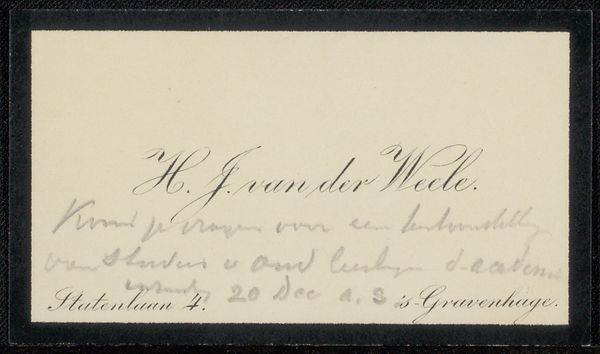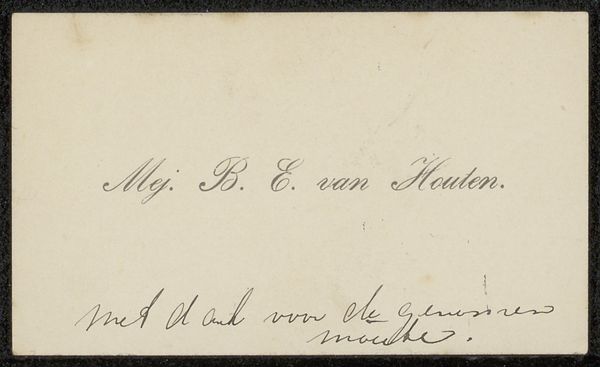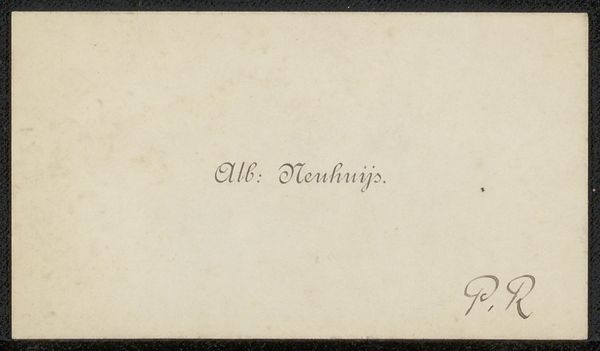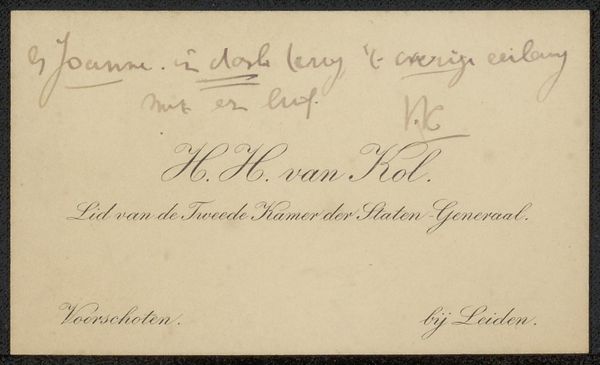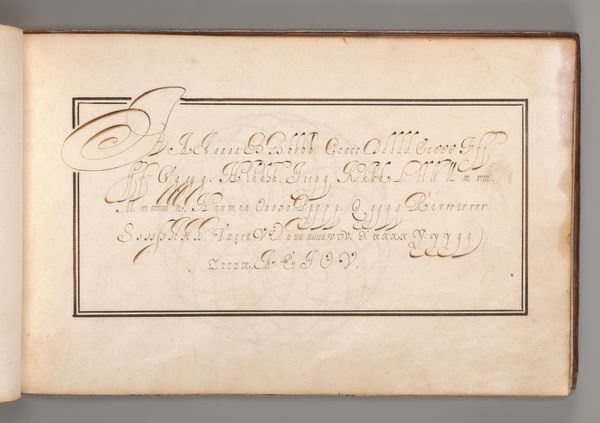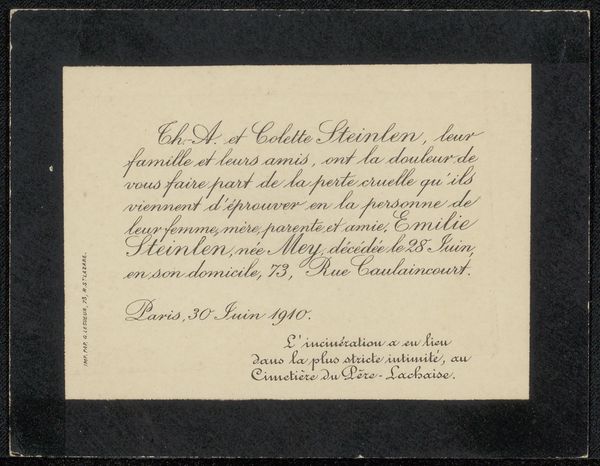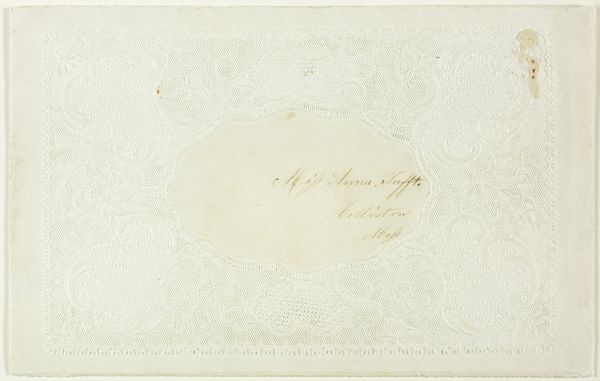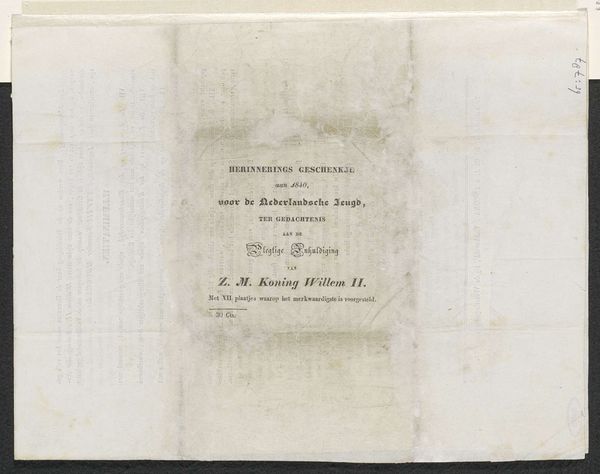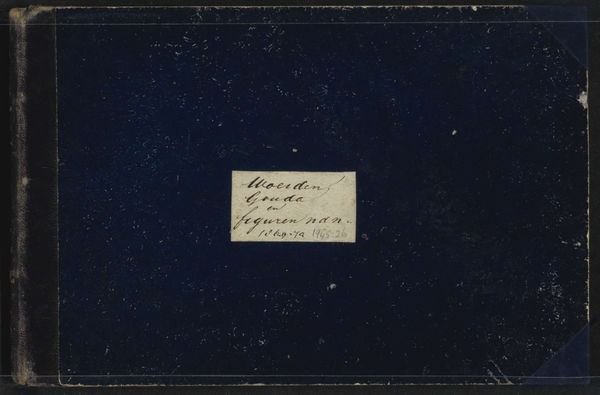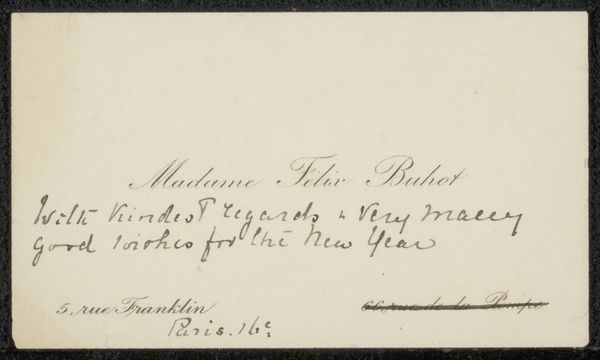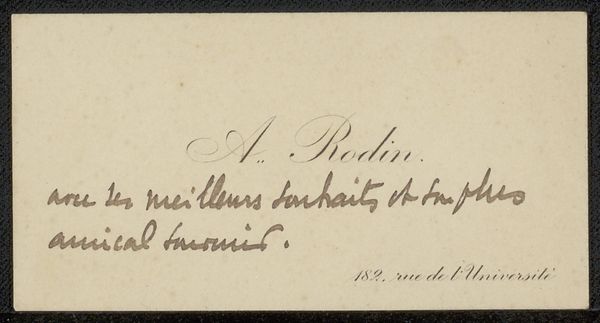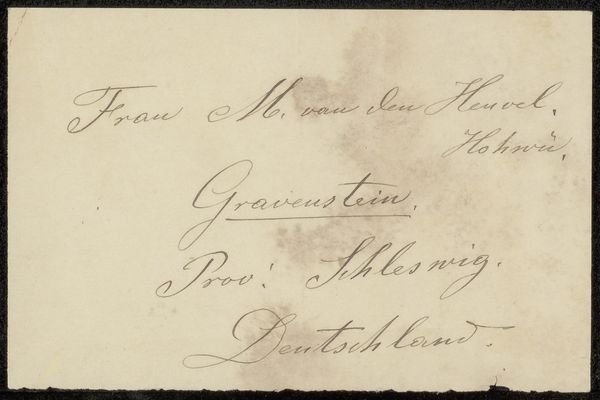
print, etching
#
portrait
# print
#
etching
#
historical font
#
calligraphy
Copyright: Rijks Museum: Open Domain
Curator: I find myself utterly charmed by this diminutive print: "Visitekaartje aan Philip Zilcken," a calling card, etched by James Abbott McNeill Whistler between 1867 and 1903. Editor: Immediately, I sense a cultivated persona at play. The refined script, the careful placement of text—it whispers of someone acutely aware of appearances. Curator: Precisely! The artistry elevated the practical. Note the locations, "Cheyne Walk, Chelsea" and "110, Rue du Bac"--two fashionable addresses suggesting a man about town, effortlessly cosmopolitan. It is interesting that there is no “de” or “von” to attach him to his identity more grandly than simply stating his name. Editor: But the etching medium! To me, it speaks of reproduction, availability. Isn’t there a clever tension between the desire to seem unique, individualized, and the mechanical means of achieving that image? As in, it wants to belong to a specific type or class, and be both identifiable, but, still maintain autonomy by stating his name only. Curator: A delightful contradiction! And consider Whistler’s overall artistic project: finding beauty in the everyday. Doesn’t this humble card serve that purpose, elevating the mundane to the realm of art? Editor: It does. The calligraphic flourishes act like personal glyphs, symbolic echoes. Calligraphy itself embodies intent and precision; therefore it’s like seeing into his particularities and motivations. Each curve and line reveals the hand, while simultaneously, potentially concealing other information by way of presentation. Curator: Beautifully put! It reveals yet conceals, a true artistic sleight of hand! Even down to the slightly mottled surface. It invites me to reconsider such throwaway objects that, perhaps, reveal much more than was initially thought. Editor: Exactly. I’m also reminded of the transient nature of relationships – the exchange of such a card being only a momentary transaction of something permanent, or not. To hold such an object in our hands allows us to revisit the original moment through its symbolism, bringing it into focus in our contemporary landscape. It asks of us, how much is performance, and how much is earnest display of being? Curator: Ultimately, it’s a deceptively simple object brimming with layers. It is really lovely to ruminate on the possibilities.
Comments
No comments
Be the first to comment and join the conversation on the ultimate creative platform.
